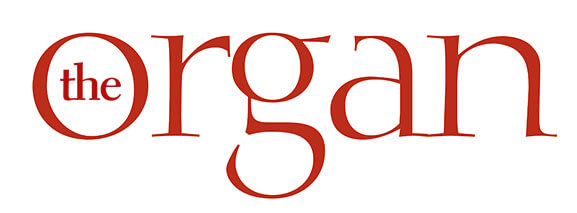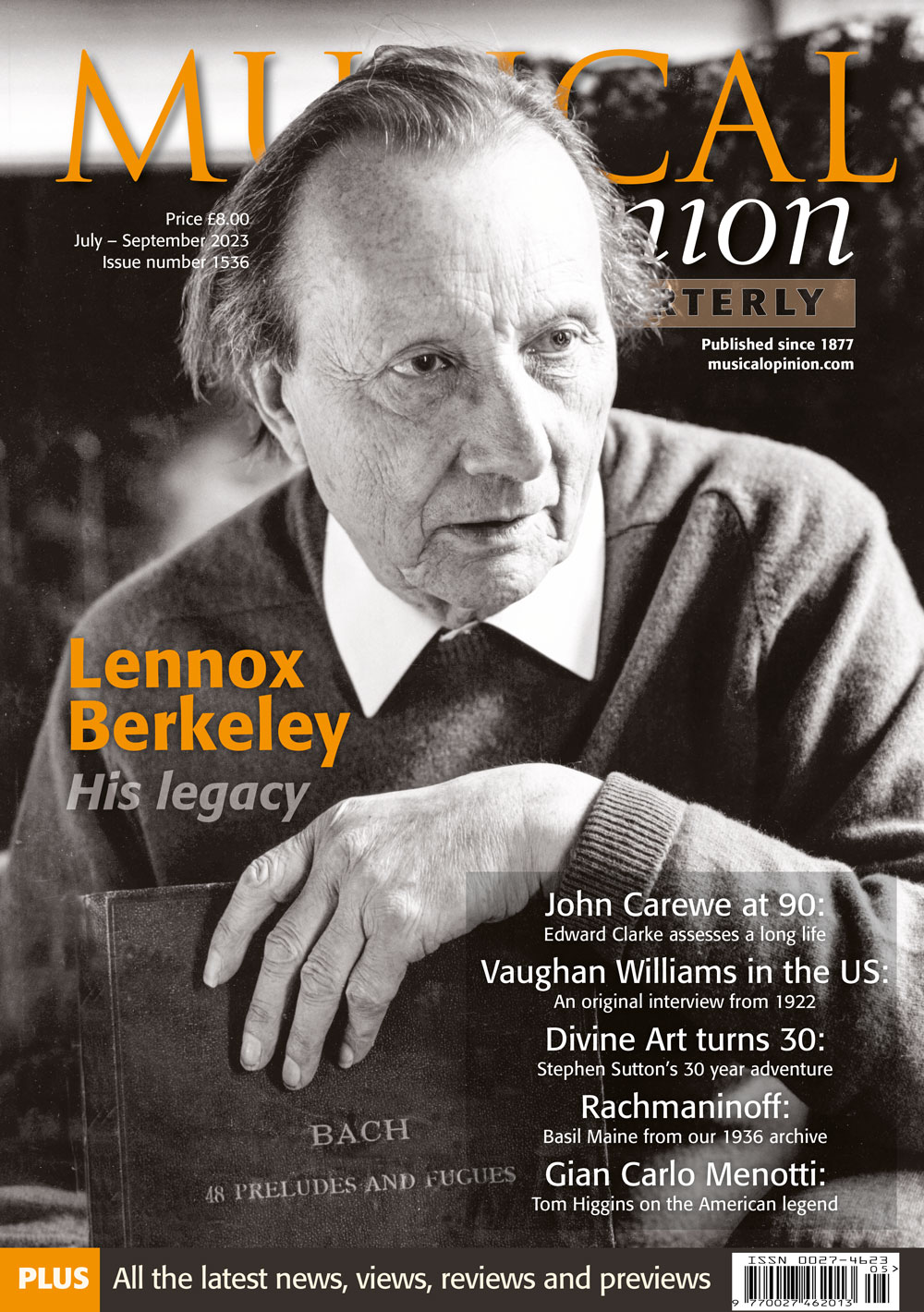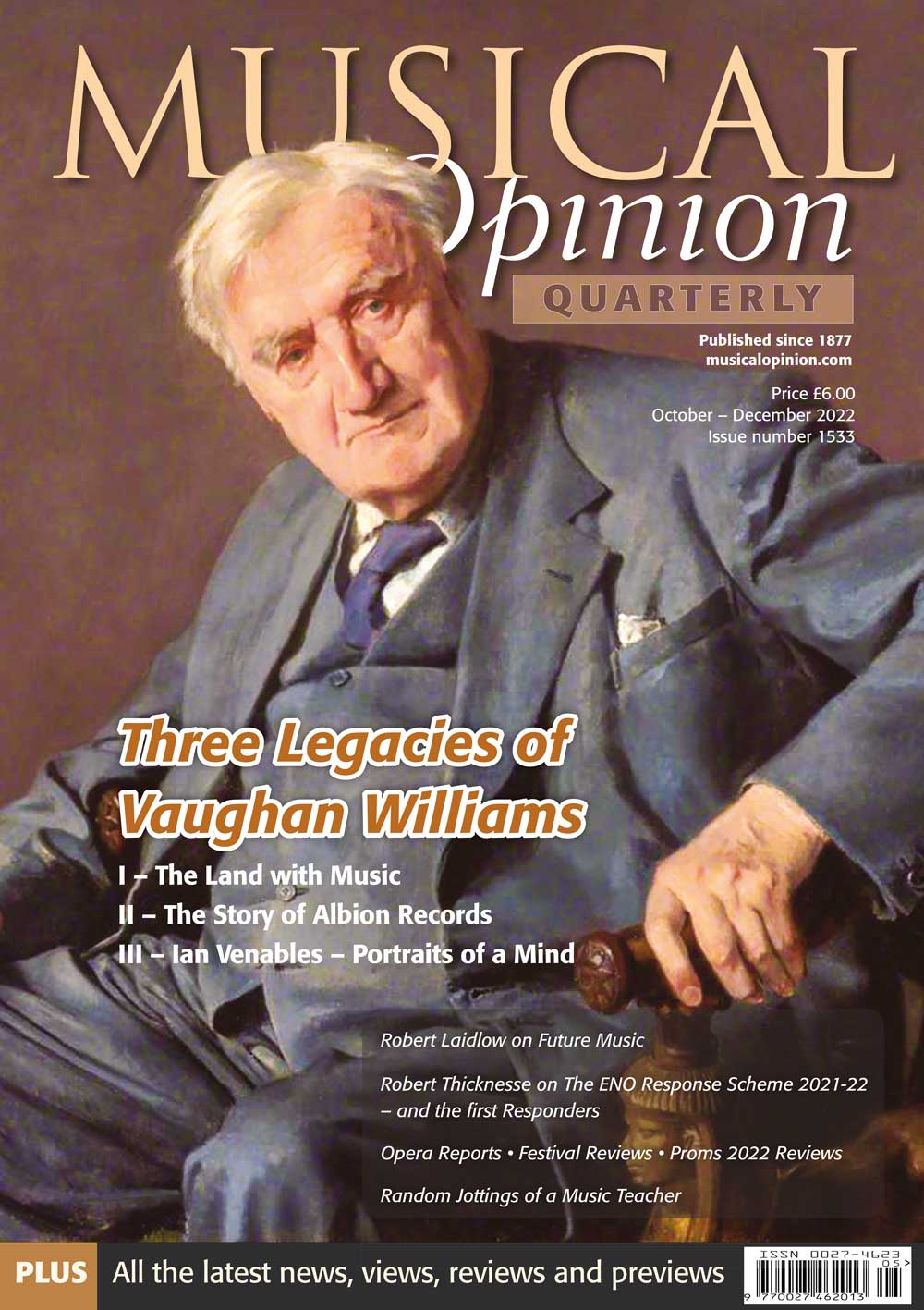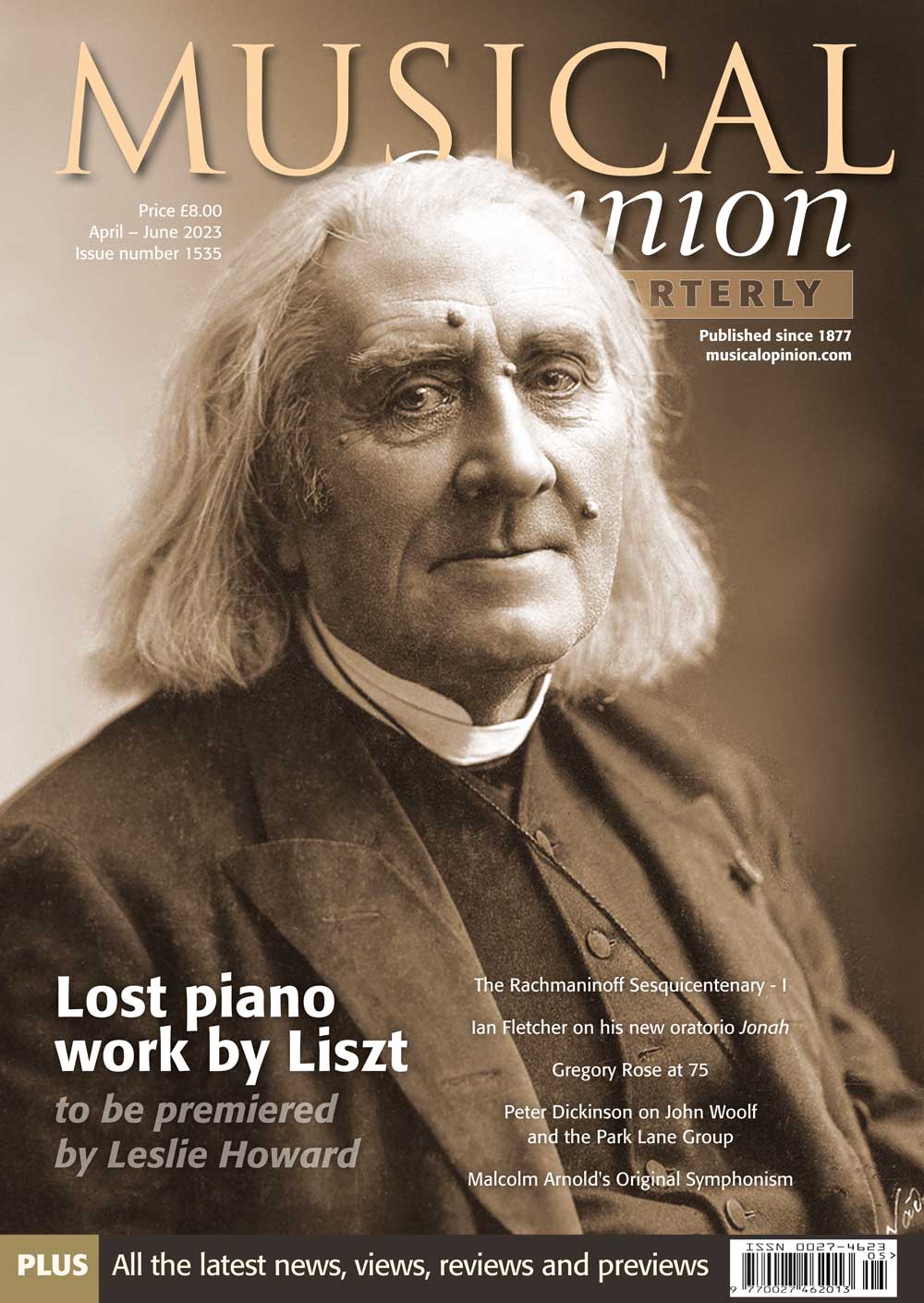Previous Issues
Summer 2024. Issue 409
Suite de Pièces pour Violon et Orgue
Spring 2024. 408
Winter 2024. 407
Autumn 2023. 406
Summer 2023. 405
Spring 2023. 404
Winter 2023. 403
Autumn 2022. 402
Summer 2022. 401
Spring 2021. 400
Winter 2021. 399
Summer 2021. 397
Winter 2021. 395
Spring 2021. 396
Autumn 2020. 394
Summer 2020. 393
Spring 2020. 392
Winter 2019. 390
Autumn 2019. 389
Explore By Topic
Autumn 2021. 398
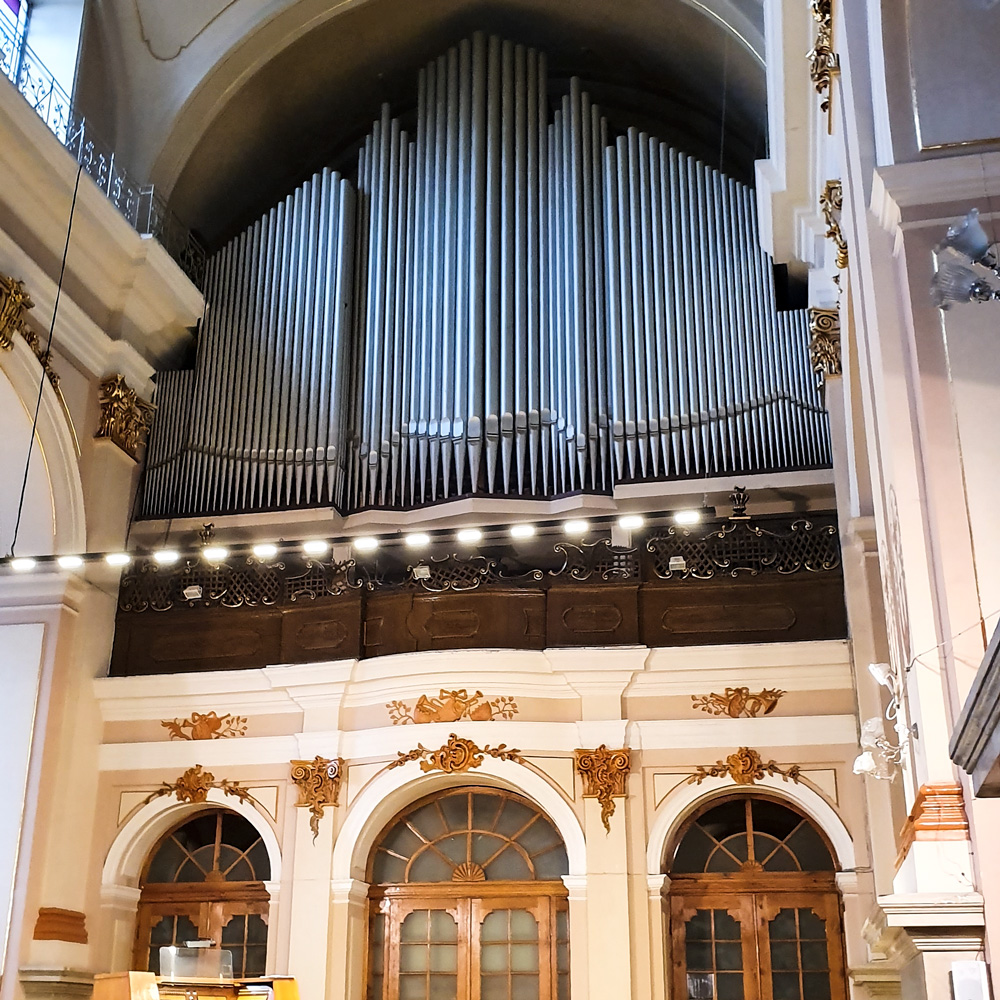
The Ukrainian Magnum Opus by Gebrüder Rieger from 1933
Dr Michał Szostak
National and local organ culture is a function of many determinants, including wealth, physical possibilities, and the consequences of socio-political circumstances. Following the path of the description of the Eastern Europe organ world, I should like to consider the magnum opus built by the Rieger-Kloss company in 1933 in one of the most interesting historical buildings in Lviv. Today Lviv is an important city on the map of Western Ukraine. Since its origin, the organ has witnessed many historical turbulences, thousands of great concerts and still serves as a milestone in maintaining organ culture in this region.
The first chapel of St. Mary-Madeleine was built by the Dominican order in 1600 as a second church building in Lviv, thanks to the noblewoman Anna Pstrokońska. At the end of the 17th century, the Dominicans significantly expanded the church and the adjoining monastery, according to the design of a prolific architect Marcin Urbanik (died 1764). The consecration took place in 1758. In terms of architecture, the dominant styles were Renaissance and Baroque. The pediment of the church was crowned with two towers and decorated with figures of Dominican saints. Inside, the main altar and nine side altars were built. WITH FULL SPECIFICATIONS
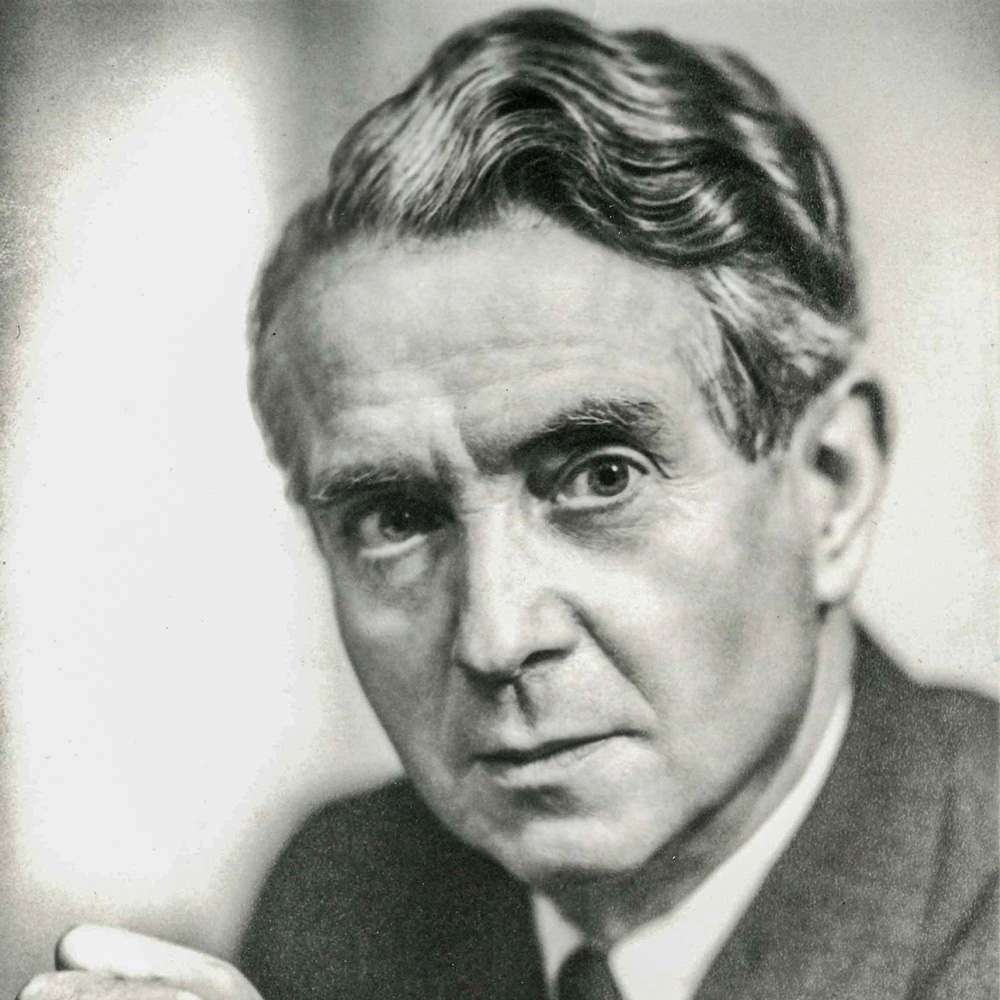
British organ music of the last half-century - 1970-2020
Ian Venables
Ian Venables writes on his Rhapsody Op. 25 ‘In memoriam Herbert Howells’ (1996).
My only foray into the world of solo organ music is my Rhapsody Op. 25 ‘In memoriam Herbert Howells’ which was written in 1996. Having been an organist in a ‘previous life’, it seemed only fitting for me to venture into this ‘new world’ and write a work for this most magisterial of instruments. Having already written an accompanied anthem O sing aloud to God and having since written a Carol, a further anthem God be merciful (my response to the present Covid pandemic) and a full scale Requiem (recently orchestrated), it would be fair to say that the organ has played a small, but significant role in my life as a composer.
The idea for writing the Rhapsody sprang from two sources. The first was from the dedicatee of the work, John Wilderspin: erstwhile organist, pianist, choral trainer and teacher, whom I knew from my days at the Royal Grammar School in Worcester, and who as official organist, had access to that establishment’s marvellous three manual Nicholson. The second was my continuing love of the music of Herbert Howells: I had played a number of his works in the past (one even in recital!) and his influence on my music has not gone unnoticed by either critics or reviewers. After John’s request that I write a work for him, many hours were then spent at the Royal Grammar School, composing what would become one of my most programmed works. WITH MUSICAL EXAMPLES
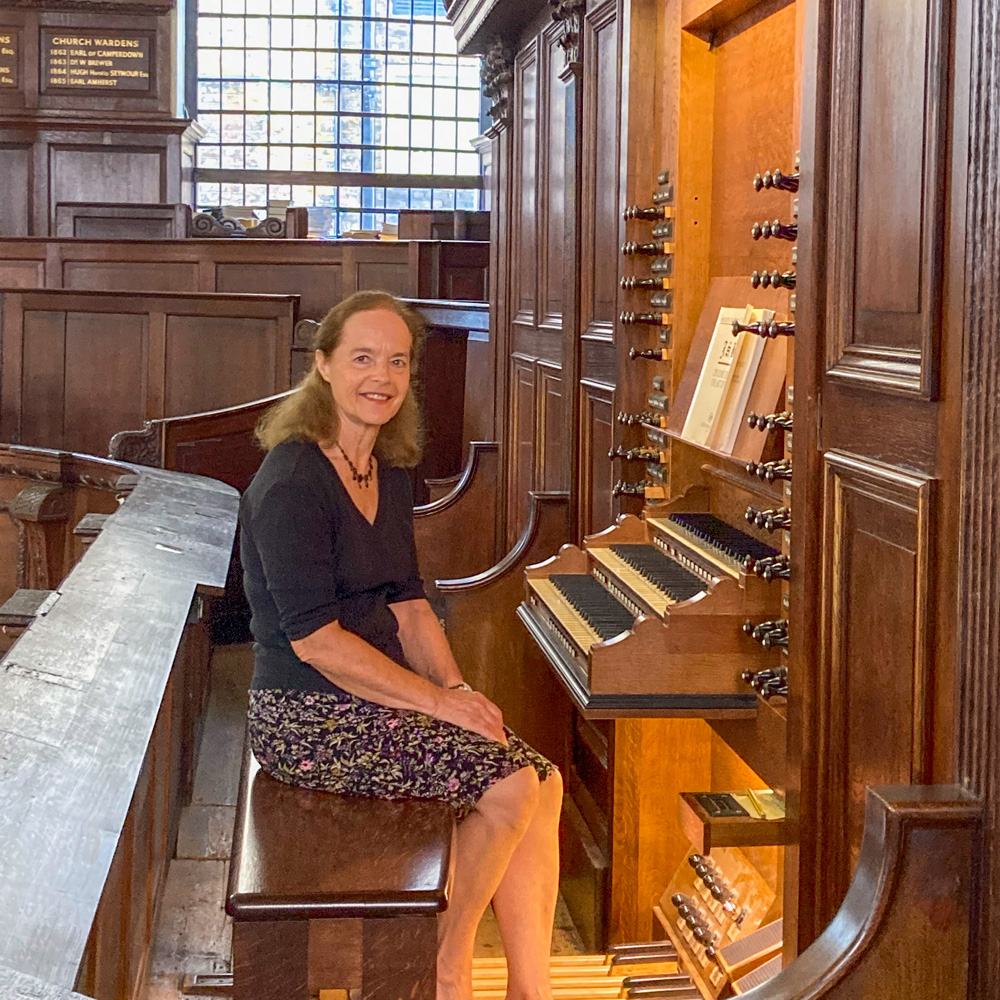
Recording Bach’s Art of Fugue
Regent Records
Learning and recording Bach’s Art of Fugue became my ‘lockdown project’ in 2020 during the first phase of the global pandemic caused by Covid-19 – something I had long thought of doing, but had never found the time. Though not specifically an organ work, it seemed appropriate to make this the culmination of my recordings of the complete organ works of Bach, a project which began in 2005, and which up until now consisted of 17 CDs recorded on 11 organs in Germany, France, Holland, Belgium, and England (Trinity College, Cambridge). Gary Cole of Regent Records has been the incomparable producer and engineer throughout.
Because of the pandemic, we were restricted to the UK for this final recording, and I am most grateful to the staff at St George’s Hanover Square, London, who responded enthusiastically to my request to use the church’s splendid Richards Fowkes & Co. Organ (2012), and went out of their way to facilitate the recording sessions between lockdowns.
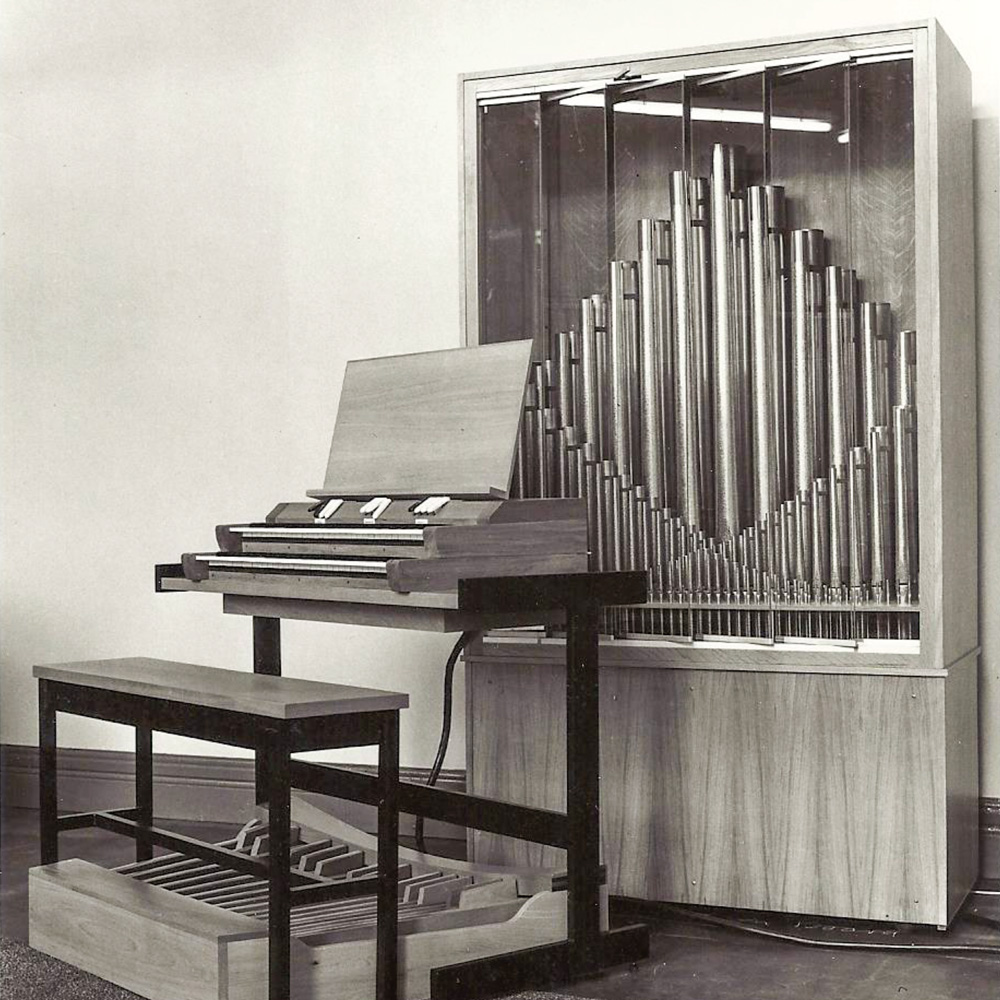
Two very different pipe organs
Dr Alan Taylor
The thought of several hours playing the organ in a cold church is enough to focus the mind and seek a more comfortable solution. During the 1970s several organ enthusiasts installed pipe organs in their homes. It was a time when many churches closed and organ parts were plentiful and cheap. At this time, it was also possible to buy a complete cinema organ. Many of these installations were functional and, in many instances, very little attention was given to the aesthetics. Unfortunately, my circumstances prevented me from taking this route. The organ would have to stand in the dining room as a piece of furniture. A simple yet attractive design was needed that would not be out of place in a modern bungalow with a low ceiling. During my initial research I read an article “A compact residence organ”, published in “The Organ” in 1956.
A further article by Dr. Jukes “Two Manuals, Pedal and a Budget” published in “The Organ” dated October 1971 examined mechanical and electric action organs with eleven or less stops available from pipe organ builders in this country and mainland Europe. Earlier editions of “The Organ” also contained articles featuring Compton and Walker unit pipe organs. In the late 1960s, whilst studying civil engineering at The University of Salford, I played a small two manual and pedal Rushworth and Dreaper Ardeton unit organ. This practice organ belonged to the Music Department and was situated in a largish room on the top floor of the University Maintenance Department. WITH FULL SPECIFICATIONS
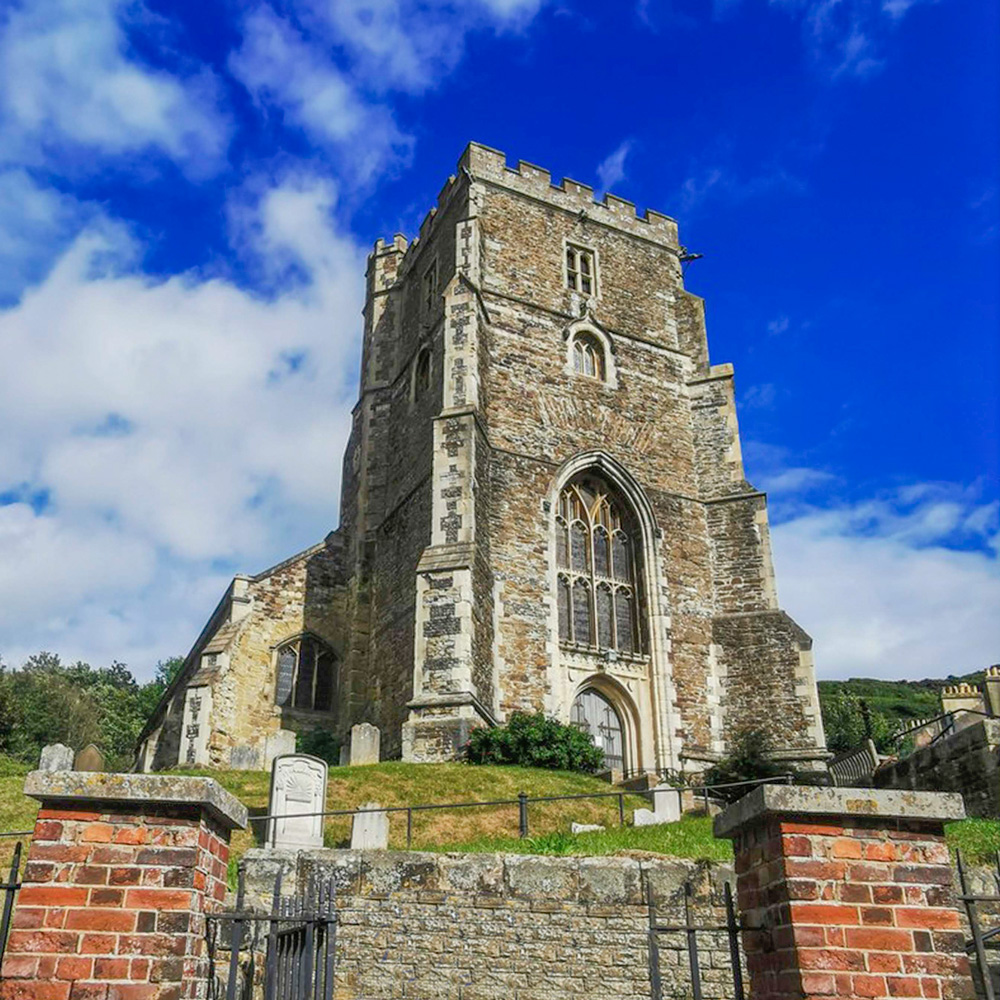
The All-Saints Hastings Organ Series 2021 – a retrospective
Stephen Page
Thirty two years ago this annual series of summer organ concerts was established. Devised by the then parish Director of Music, Nigel Spooner, the aim was to shine a spotlight on the church’s organ and to make it better known. By engaging visiting organists to bring a variety of repertoire in well planned programmes the hope was that there would be an appeal to locals and visitors alike during the height of the tourist season. There would perhaps be nothing particularly remarkable if this series took place in a cathedral or greater parish church but it is less usual to find a long running venture outside of such settings. The organiser of these concerts today is the current Musical Director, Malcolm Lock, and before him the task was undertaken for many years by Marion Lovell who still attends and helps to promote them.
In common with so many other events last year the Covid pandemic brought a temporary halt to proceedings with no live concerts possible. However, the ever supportive Gordon Stewart presented an online-only performance, specially recorded at All Saints, which was greatly appreciated by many people during lockdown. It was with a little trepidation that this year’s series was announced to be going ahead. As Covid restrictions eased audiences moved from being required to wear masks for the duration to a position where common sense and cooperation enabled the accommodation of those who wished to continue to operate in this way alongside others who were happier with fewer restrictions.
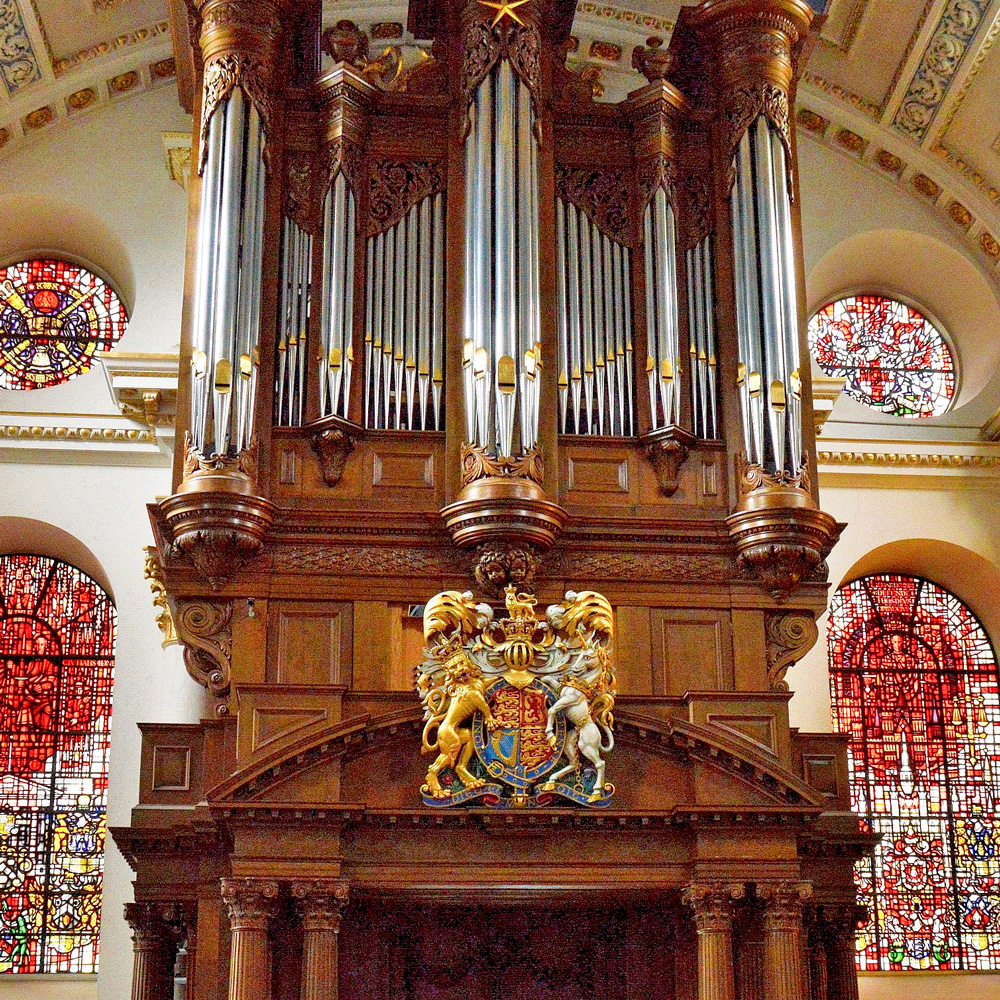
The Organ at Bow Church, Cheapside, London.
Charles William Pearce (1905)
Stow writes in his Survey of London, ‘This church, in the reign of William the Conqueror, being the first in this city built on arches of stone, was therefore called New Marie Church, of S. Marie de Arcubus or Le Bow, in West Cheaping; as Stratford Bridge, being the first built (by Matilda the Queen, wife of Henry I) with arches of stone, was called ‘Stratford le Bow’; which names to the said church and bridge remaineth to this day. The Court of the Arches is kept in this church and taketh name of the place, not the place of the court.
In Blackstone’s Commentaries Vol III, cap.5/1, we read that ‘the Court of Arches is an ecclesiastical court of appeal belonging to the Archbishop of Canterbury, because he anciently held his court in the Church of St Mary le Bow (Sancta Maria de Ancubus), though all the principal spiritual courts are now holden at Doctors’ Commons.’ The Court of Arches is, at the present time, hed at the New Law Courts in The Strand; but the ceremony of the ‘confirmation’ of all Bishops of the Province of Canterbury still takes place at Bow Church. WITH FULL SPECIFICATION

The organ music of Axel Ruoff – Part I
Cornelis Witthoefft
The first of the author’s two part study of the organ works of the contemporary German composer Axel Ruoff, coincidental with the release of recordings of this music on the Toccata Classics label.
In 1795, in his pre-Romantic essay Rambles and Musings in the Realm of Music, the German composer and writer Johann Friedrich Reichardt wrote an account of a fictitious sacred concert he allegedly attended, featuring soloists, chorus, orchestra and organ in order to make his point of what he thought the future of spiritual music should be:
Then the orchestra began an overture. However, as good and well-equipped as it was, compared with the glorious opulence and exalted unity of the organ its effect remained petty and shallow. How is it possible, I mused to myself, that the most splendid of all instruments comprising an entire orchestra with all its mighty power and opulence should be left so unused, that an orchestra of the most heterogeneous instruments and people assembled apprehensively should be preferred to or at least put on a par with it while a single human being who is genuinely inspired or highly educated can, with quiet touches, move the ocean of sounds to a gentle surge, or with tempestuous grasps stir it to the utmost motion, upsetting it to the core.
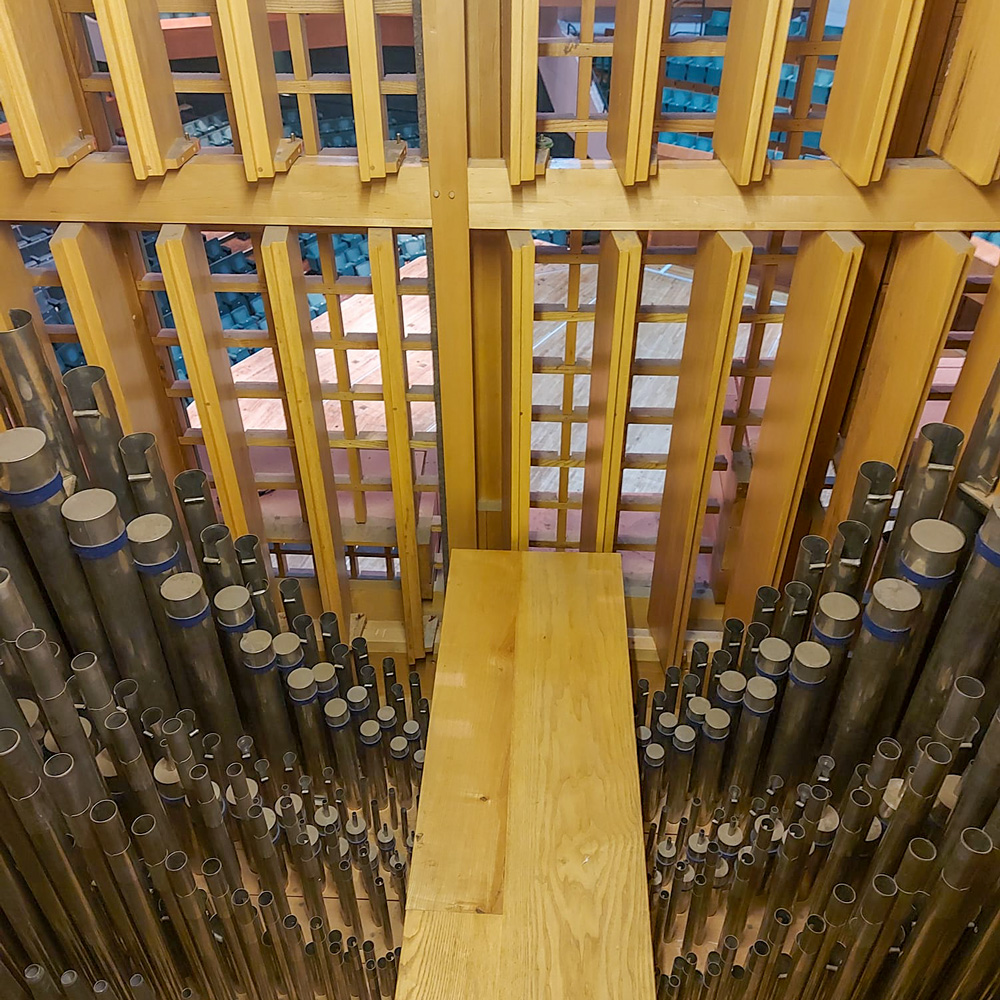
The organ in St Mellitus RC Church Stroud Green
David Norton
St Mellitus RC Church is an imposing Grade II-listed neoclassical building that has stood on Tollington Park in Stroud Green, north London, for 150 years. Designed by CG Searle (1816-1881), the church opened on 18th September 1871 as New Court Congregational Chapel. In 1959 it was sold to the Roman Catholic Diocese of Westminster, the parish of St Mellitus having grown to accommodate the influx of Irish immigrants to Islington after the Second World War.
The Hunter organ at St Mellitus dates from just after the First World War. It was installed in 1920 to honour 221 men from New Court who served, 46 of whom died, and it replaced the original organ. An appeal letter from a church meeting in 1919 stated: “This would be the memorial: the names of our fallen heroes and also the men who had served in HM Forces would be suitably inscribed in some prominent place.” The St Mellitus Organ Restoration Project oversaw the restoration of the instrument in time for its centenary, and continues to research the stories of the soldiers it commemorates. WITH FULL SPECIFICATION
